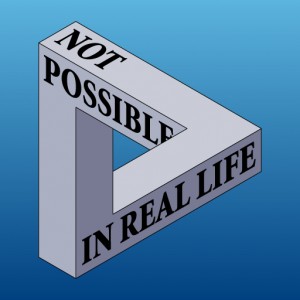April 8th, 2009 by Frank LaBanca, Ed.D.
 I often shudder when I hear a teacher exclaim, “We’re going to do <insert activity here>. Its ‘LIKE REAL LIFE’!” I think some may look at a statement like that and think, but isn’t that what we are supposed to do? My response is why does everything have to be a simulation. Something that the teacher preconceives: a well-known question, with a well-known outcome. Once again stifling the creativity of our youth.
I often shudder when I hear a teacher exclaim, “We’re going to do <insert activity here>. Its ‘LIKE REAL LIFE’!” I think some may look at a statement like that and think, but isn’t that what we are supposed to do? My response is why does everything have to be a simulation. Something that the teacher preconceives: a well-known question, with a well-known outcome. Once again stifling the creativity of our youth.
I say it should just be real life. If students are conducting research on topics that they select, based on meaningful research, knowing that there is an authentic audience (and I mean a REAL authentic audience, not some ‘LIKE’ real authentic audience), then we bring more meaning to the work they do. If they are finding and solving real problems where they really have to interact with members of a community of practice, they learn that their knowledge acquisition must be in conjunction with value-added product generation. What could be better than cognitive growth both in scientific concepts and authentic interaction.
I reflect on this, because earlier today I was discussing the science research of my students with a visiting educational leader . He looked at the posters the students had created and was just floored by the quality of their work. These posters (dimensions 40″x60″) are printed using an HP T1100 wide format printer that my department has (especially for this purpose). Students design single PowerPoint slides which are formatted with the appropriate dimensions. They prepare, print, spray mount to foam core, and present these posters at science fairs and symposia. They are evaluated by practicing engineers and scientists in industry and academia.
Now, at the same time, I am preparing my research for the American Educational Research Association annual meeting in San Diego next week. I am doing exactly what my students did: I created a large-scale poster using PowerPoint based on the extended research I conducted over a long period of time. I spent many intricate hours designing and laying out the introduction, methodology, data, and conclusions. My students offered me several comments along the way, just as I had offered them while they were preparing for the Connecticut Science Fair. We were collectively involved in the preparation for presentation of research to an authentic audience.

I am literally practicing what I preach. My work becomes a comparison for them and I think we all benefit because it truly is REAL.